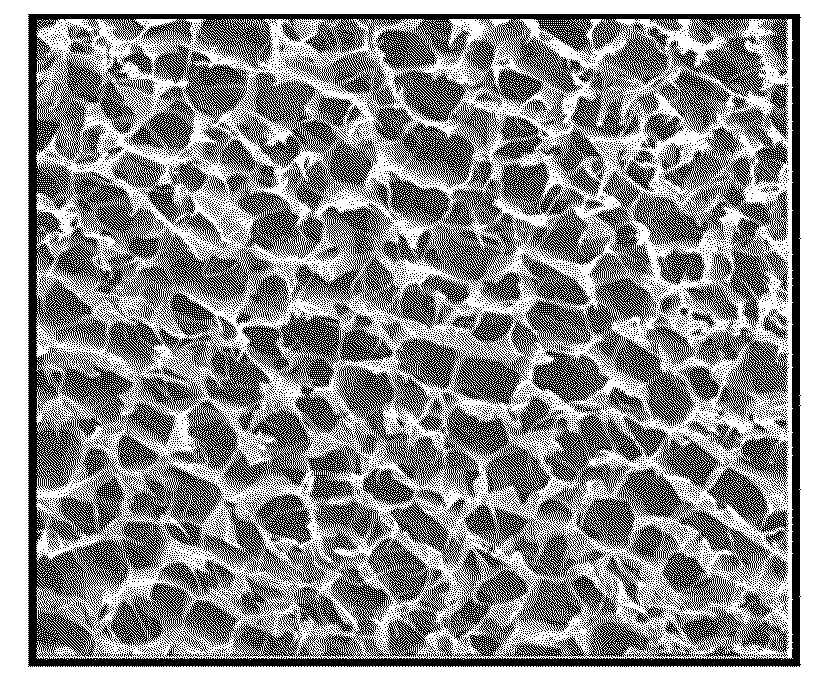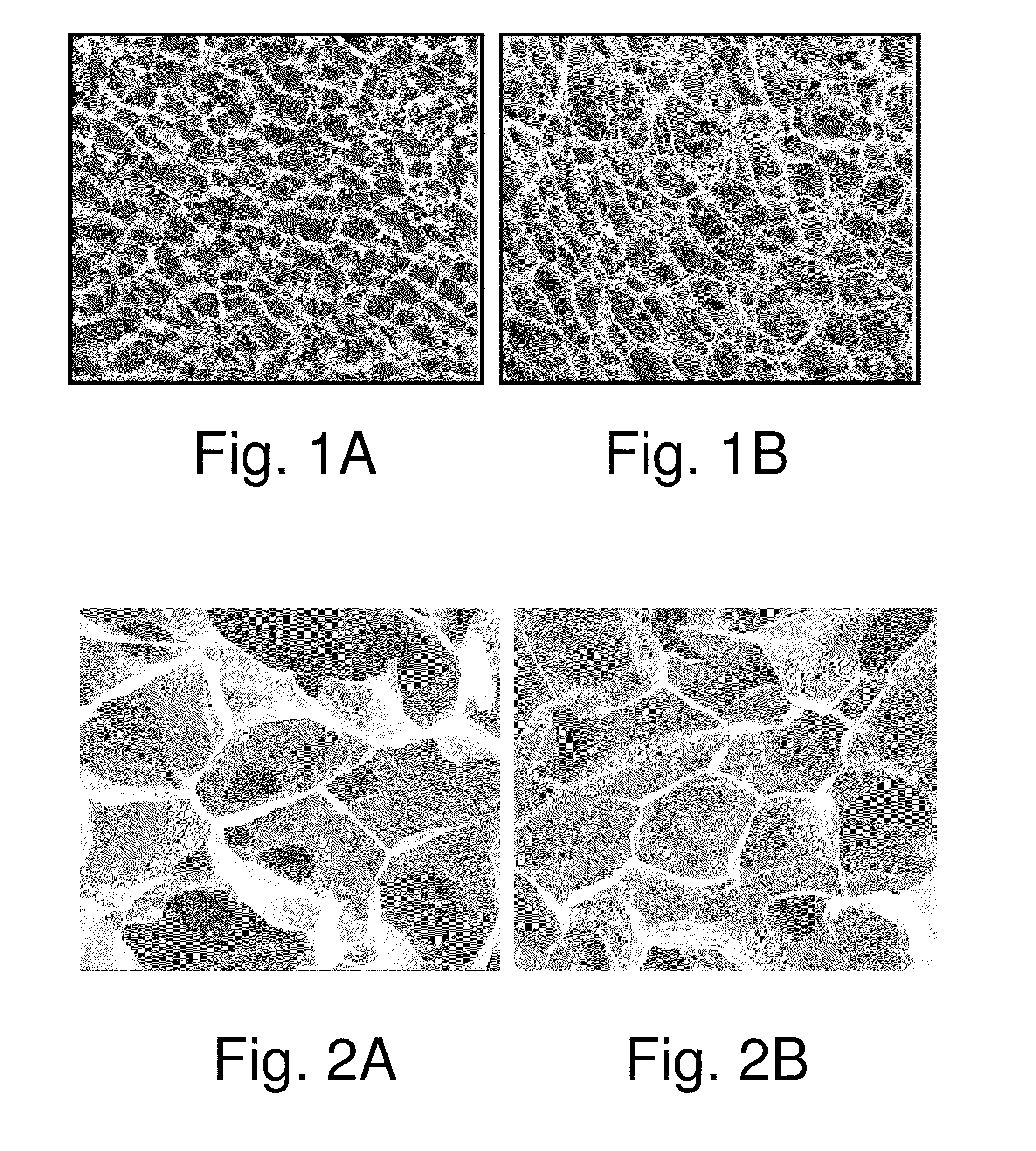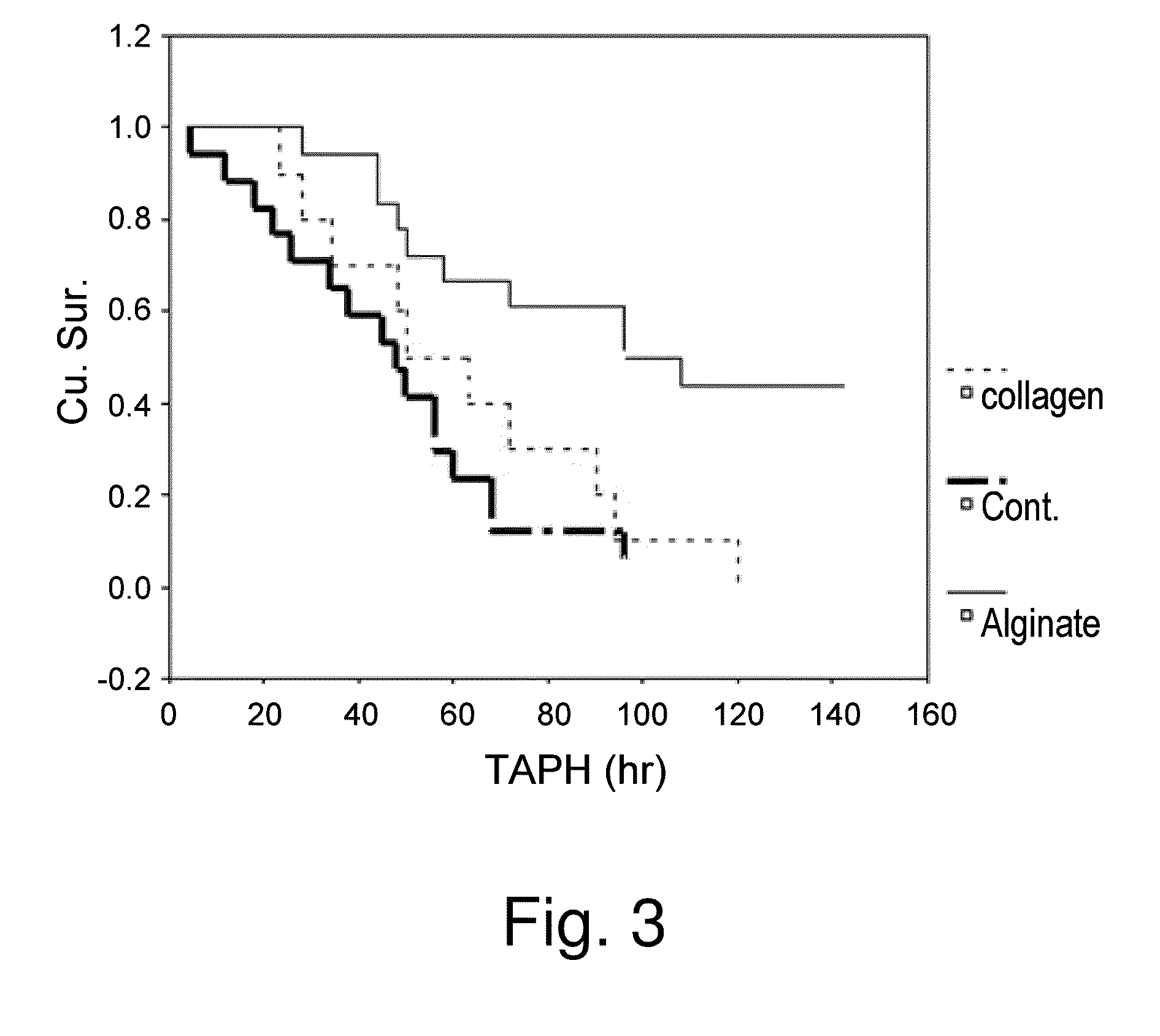Alginate Biomaterials for the Treatment of Hepatic Disorders
a biomaterial and hepatic technology, applied in the field of alginate biomaterials for the treatment of hepatic disorders, can solve the problems of greatly impaired ability to remodel and replace, and high risk of fulminant hepatic failure, so as to reduce the level of apoptosis, maintain serum albumin levels, and reduce the level of any one of serum al
- Summary
- Abstract
- Description
- Claims
- Application Information
AI Technical Summary
Benefits of technology
Problems solved by technology
Method used
Image
Examples
example 1
Survival Among the Experimental Groups
[0170]Hepatectomy is often the last and best resort for large hepatic tumors and metastasis. However, hepatectomy may severely impair hepatic functions and thereby survival of patients under conditions were surgical resection of the liver is warranted. As shown in FIG. 3, survival was significantly higher in the group with the implanted alginate scaffold, 60% vs. 10% without the scaffold (log rank=0.001). There was no significant difference in survival in the collagen and no-scaffold groups, indicating that the effect of the alginate scaffold is not mediated through hemostasis. Survival significantly decreased when either a collagen scaffold or no scaffold were used. The inventors further valuated the hepatocellular damage in the three experimental groups, as demonstrated by FIG. 4. As shown by the figure, three hours after hepatectomy, massive necrosis is clearly apparent in the control group whereas the alginate group demonstrates almost norma...
example 2
Liver Enzymes and Albumin Levels Among Experimental Groups
[0171]Liver transaminase provides evidence for hepatic cell injury, whereas albumin provides indication for the synthetic ability of the liver. Testing gives an indication about the state of a patient's liver. As shown in FIGS. 5A, 5B and Table 1, ALT and AST levels confirmed the histopathological findings demonstrating significantly increase of between two to twenty folds in the control groups versus nearly normal levels in mice with the implanted alginate scaffold (p<0.0001 in 6, 24, hours and 6 days). Levels peaked 24 hours after hepatectomy in groups without scaffold and collagen scaffold and remain stable in the alginate group.
[0172]As shown by FIG. 6, albumin was significantly higher in the alginate group versus the collagen group and the control. These results indicated that alginate scaffold prevents hepatocellular damage and improves hepatic synthetic function after subtotal partial hepatectomy.
TABLE 1Summary of AST,...
example 3
Effect of Alginate on Apoptosis and Cell Replication
[0173]To further investigate whether the beneficial effect of application of alginate on the remaining liver tissue involved apoptotic processes, the inventors next compared apoptotic markers in the three experimental groups. As shown by FIG. 7, immuno-histochemistry for cleaved caspase 3 was significantly higher in the control groups, while in the alginate-treated group no staining noted, suggesting a significantly reduced apoptosis in the alginate treated group. The absent of caspase 3 staining in the alginate group is particularly meaningful in view of the marked increase in apoptosis in the control groups, especially 24 hours after hepatectomy.
[0174]The inventors therefore next examined the effect of alginate treatment on cell replication. BrdU was used as a marker for hepatocyte replication. As shown by FIG. 8, a significant increase in cell staining is clearly demonstrated at 3, 6 and 24 hours in the alginate treated group. I...
PUM
| Property | Measurement | Unit |
|---|---|---|
| molecular weight | aaaaa | aaaaa |
| diameter | aaaaa | aaaaa |
| pore size | aaaaa | aaaaa |
Abstract
Description
Claims
Application Information
 Login to View More
Login to View More - R&D
- Intellectual Property
- Life Sciences
- Materials
- Tech Scout
- Unparalleled Data Quality
- Higher Quality Content
- 60% Fewer Hallucinations
Browse by: Latest US Patents, China's latest patents, Technical Efficacy Thesaurus, Application Domain, Technology Topic, Popular Technical Reports.
© 2025 PatSnap. All rights reserved.Legal|Privacy policy|Modern Slavery Act Transparency Statement|Sitemap|About US| Contact US: help@patsnap.com



